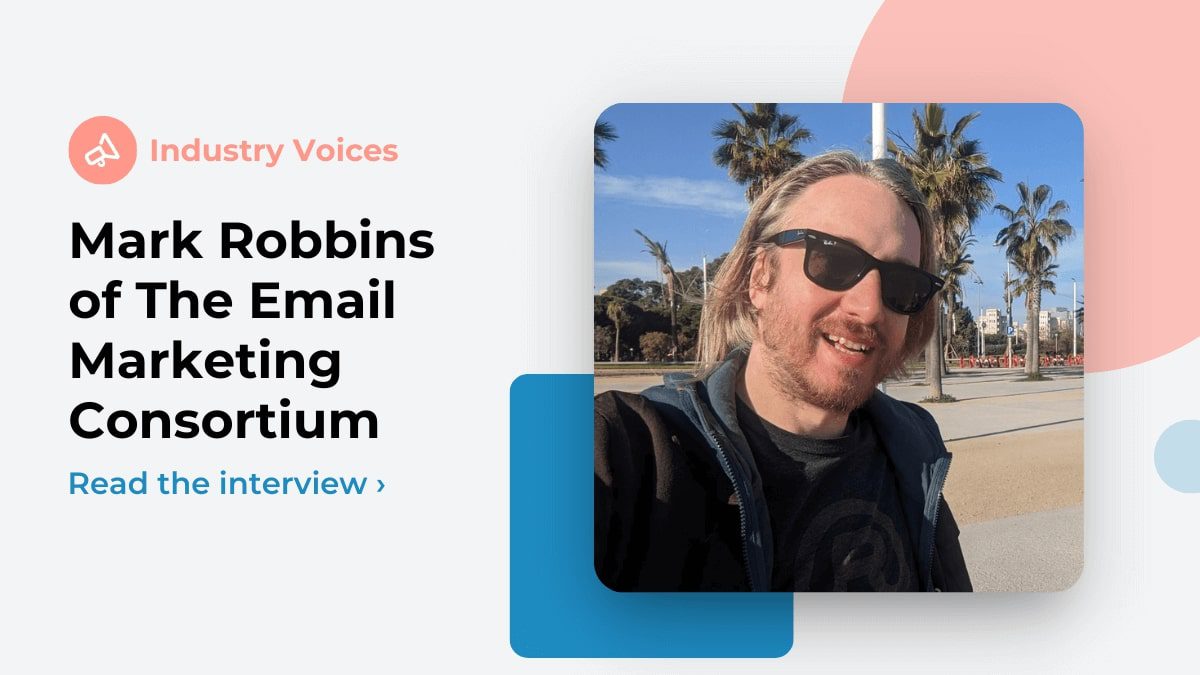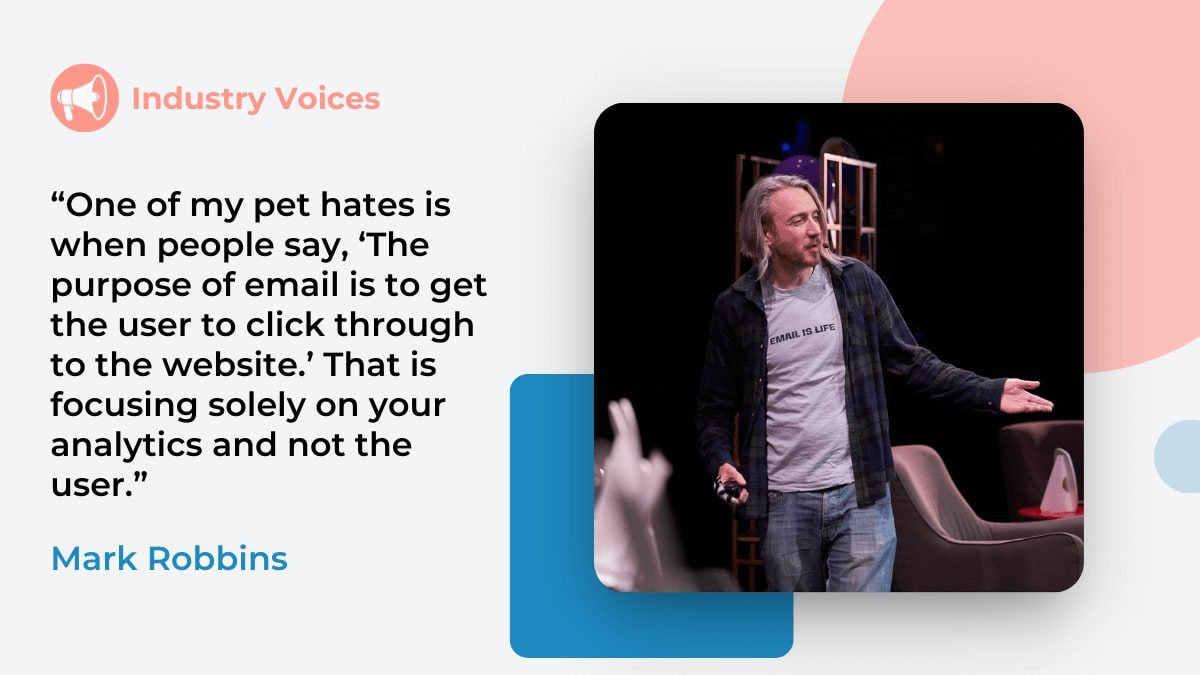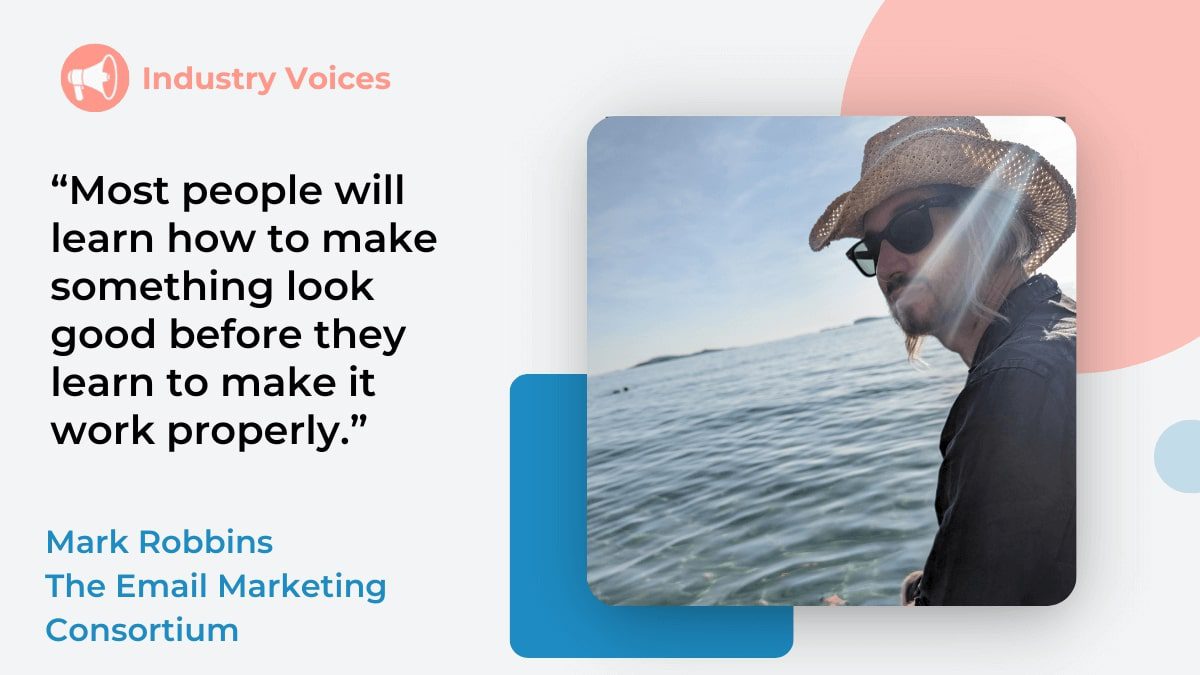
Mark Robbins, Email Markup Consortium: On Why You Should Care About Email Accessibility
Mark Robbins of the Email Markup Consortium and Parcel talks to ZeroBounce about email accessibility – and how to make your emails pop.
Can you imagine anything more frustrating than getting an email from a brand you care about but encountering a barrier that prevents you from finding out what it said?
We can think of one thing – being the person who worked so hard on writing and designing that same email. It may have been brilliant, but because of email accessibility problems, the message was lost in translation.
How email accessibility improves your audience’s experience
We wanted to find out more about email accessibility, so we sat down with Mark Robbins of the Email Markup Consortium (EMC) and Parcel. The EMC’s goal is to improve the user experience, accessibility and performance of email markup.
Email markup adds structured data to emails to make them more interactive and all-around useful for the recipients.
Read on to find out:
- Why an email should always be about more than just getting someone to click
- Why you should never overlook accessibility
- The six top email accessibility issues – and how to easily fix them.
Mark Robbins, thank you so much for making the time for “Industry Voices.” A big shout-out to Simon Harper for putting us together. How’s your inbox looking today?
It’s looking good. There are some fun projects on the “go” at the moment, so I’m getting meeting invites and seeing GitHub PR notifications. So lots of exciting things are happening.
Speaking of inboxes – are you an inbox zero practitioner?
I try. I always tend to have about 5-10 emails I’ve marked as unread that I need to follow up on, at least one of which is probably over six months old. So it’s not often I actually get to zero, but I often skirt around it.
The title of “Email Geek” is a badge of honor. Why is Mark Robbins an email geek? What drives your interest?
I need to know why things are the way they are. Why is this color different in Gmail? Why is this not aligned in Outlook?
I like digging into issues and trying to determine exactly what is going on and why.
Writing code for email is constant problem-solving, but because it’s code, there’s always logic to it. The reasons things are set up in certain ways can be harder to understand as that is more down to human decisions.
It can be frustrating when facing a tricky issue that at first glance makes no sense at all, but that also makes it incredibly rewarding when the solution finally reveals itself to you.
More emails than email geeks realize have problems or technical issues. Why do you think email marketers are unaware?
There are some really great email testing tools available: Litmus, Email on Acid and of course, Parcel. With these tools, you can get screenshots of how your email renders in multiple email clients, and you can run accessibility tests to flag potential issues and run a few other tests too. But it’s impossible to get a full picture of every email that will be opened.
There are so many other factors that can affect things. Email client settings, browser settings (for webmail), operating system settings, assistive technology, additional apps, extensions, and plugins.
Understanding all of these issues is incredibly complex, and the more I learn, the more I realize how big it is.
I think people (including myself) often get caught up focusing on one small issue, on one version, of one email client when there are likely bigger issues and easier wins out there.
Many email marketers are oblivious to the fact that various things in their emails are frustrating or annoying the subscribers. How can they avoid that, and furthermore, get their audiences to look forward to their emails?
User experience is something that we need to talk about a lot more in email.
One of my pet hates is when people say, “The purpose of email is to get the user to click through to the website.” That is focusing solely on your analytics and not the user.
When sending an email, it’s always good to ask yourself, what is the purpose of this email? Why are we sending it? Why now? Why send it to these particular users?
Often, the answer is “We want to sell more of X,” or “We want the users to do Y.” That’s ok, but it’s more important to ask: how does this benefit the user? Why would they want to complete the action you are asking of them, and how are you communicating that to them?
Also, remember this key point when a user chooses not to click, unsubscribe, or just ignore an email. These are all very valid user actions and not always negative.

Not everyone in the email space may be familiar with the Email Markup Consortium, but they should be. What inspired this community group?
There was a discussion on the EmailGeeks slack group that Jay (from Action Rocket) started. He was frustrated by the lack of standards in email markup and felt quite powerless to do anything about it. This resonated strongly with me and several others in the community. We decided we needed a body to push for something better. So we started one, The Email Markup Consortium.
Our goal is to improve the experience for everyone. We saw that email developers, email creation tools, email sending tools, email clients, and the end users all have similar goals. We all want emails that are consistent, reliable, accessible, functional, and provide a great user experience.
We also want them to be very secure because adding this protection is often where the issues come in.
To protect the end users, the email markup that is sent needs to be sanitized. Everyone takes their own approach to solving this, which causes all the inconsistency. If we can work with email clients to establish better alignment on how to sanitize code and work with senders to align on how to write code, we will have a much better experience for everyone. That gives us more time to focus on other things.
There have been some other attempts in the past to do something similar, but each has fizzled out over time.
What we’re trying to do at the EMC is to make something that lasts. Everything is open source, and anyone can get involved. So this means if/when the current admins leave for whatever reason, someone else can pick things up and carry on.
The Email Markup Consortium’s 2023 Accessibility Report showed that accessibility issues are not the exception but rather the rule! What reason do you think such issues exist to this extent?
There are some strange people in the world who, for some reason, don’t love email code as much as I do. There’s often an attitude that writing code for email is outdated, isn’t fun, and/or doesn’t matter. So it gets given to a junior marketer or a junior web developer.
In reality, email code is incredibly complex. I’ve been doing it for 11 years now, and I’m still learning new things all the time.
Accessibility should be one of the first things people learn, but in reality, that’s rarely the case. Most people will learn how to make something look good before they learn to make it work properly (make it accessible). This is also reflected in the QA and approval process. Priority is often given to ensuring something looks good in whatever email client the CEO uses over ensuring things are functional for all end users.

What’s something easy email marketers could do to make email better that you just wish they would?
Six of the top ten issues from the email accessibility report are down to missing HTML attributes.
These are very quick to add, just a very small amount of code that won’t change the look of your emails.
- Add a lang attribute to the <html> element to define a language for your email e.g. <html lang=”en”>
- Add a lang attribute to an element inside the <body> of your email that wraps all the content e.g. <div lang=”en”>
- Also add a dir attribute to this element to define the direction of the language (ltr or rtl) e.g. <div lang=”en” dir=”ltr”>
- Add a role attribute set to “presentation” or “none” to any <table> element that is used for layout e.g <table role=”presentation”>.
- Set an alt attribute on all images, ideally, this should also contain well-written alt text, but if the image is just decorative and not adding anything to the content, you can leave it blank e.g. <img alt=””>
- Set an alt attribute on all VML elements, VML is technically an image format, so just like an image, it needs an alt attribute e.g. <v:rect alt=””>
You can read more details on how to fix these issues in the EMC accessibility report.
What advice would you give someone who’s just embarking on the world of email marketing?
Firstly, join the EmailGeeks slack group. There are so many knowledgeable people there willing to answer any questions you might have and help you through any issues you face.
Then, experiment, play around, and learn from your mistakes. Remember that for everything you will put into production and send to actual users, run it past a few people first.

Where do you see email in ten years?
I think the core principles won’t change much: a good email message is good, and a bad one is bad.
How we create code and content will evolve and be much more efficient with better tooling. AI will play a part in this but won’t replace it.
More email clients will likely introduce privacy measures for their users (such as MPP), making it harder to track performance. So I’m hoping this will push more focus on user experience.
The focus on email accessibility will continue to grow, and we’ll see a focus on sustainability start to come up and follow a similar pattern.
Rapid-fire round with Mark Robbins
What is a brand email you will always open:
I love Email Weekly from Action Rocket; not only do they have great content, but they also have a real sense of fun in the copy. They also do occasional experimental things in the code, really pushing what is possible in email.
What makes you want to subscribe to a newsletter?
Content. I love beautiful design, and I really love some clever code trickery, but those things will only keep me interested for a few emails. It needs to have good content for something to really stick and keep me subscribed long-term. It needs to be up to date and created (or curated) by someone who really understands the topic.
How do you feel about plain-text emails?
I can see their use, but I’m not a fan. They are terrible for accessibility as the code has no structure, and links need to use their full URL. What is much better is using a text-based HTML email.
Can you remember your very first email address? What was it?
That’s going back a few years…
I think I might have had one at college? I certainly had one at university. I can’t remember what they were, but I know they would have been tied to the institution.
I remember as I was leaving, I needed to set up a new personal email, so I got myself a yahoo.co.uk address that I still use today, some 20+ years later.
Connect with Mark Robbins on LinkedIn.
Is your email list getting too many bounces lately? Why not find out how healthy your email list is?
Table of Contents
- How email accessibility improves your audience’s experience
- Mark Robbins, thank you so much for making the time for “Industry Voices.” A big shout-out to Simon Harper for putting us together. How’s your inbox looking today?
- Speaking of inboxes – are you an inbox zero practitioner?
- The title of “Email Geek” is a badge of honor. Why is Mark Robbins an email geek? What drives your interest?
- More emails than email geeks realize have problems or technical issues. Why do you think email marketers are unaware?
- Many email marketers are oblivious to the fact that various things in their emails are frustrating or annoying the subscribers. How can they avoid that, and furthermore, get their audiences to look forward to their emails?
- Not everyone in the email space may be familiar with the Email Markup Consortium, but they should be. What inspired this community group?
- The Email Markup Consortium’s 2023 Accessibility Report showed that accessibility issues are not the exception but rather the rule! What reason do you think such issues exist to this extent?
- What’s something easy email marketers could do to make email better that you just wish they would?
- What advice would you give someone who’s just embarking on the world of email marketing?
- Where do you see email in ten years?
- Rapid-fire round with Mark Robbins
- What is a brand email you will always open:
- What makes you want to subscribe to a newsletter?
- How do you feel about plain-text emails?
- Can you remember your very first email address? What was it?






